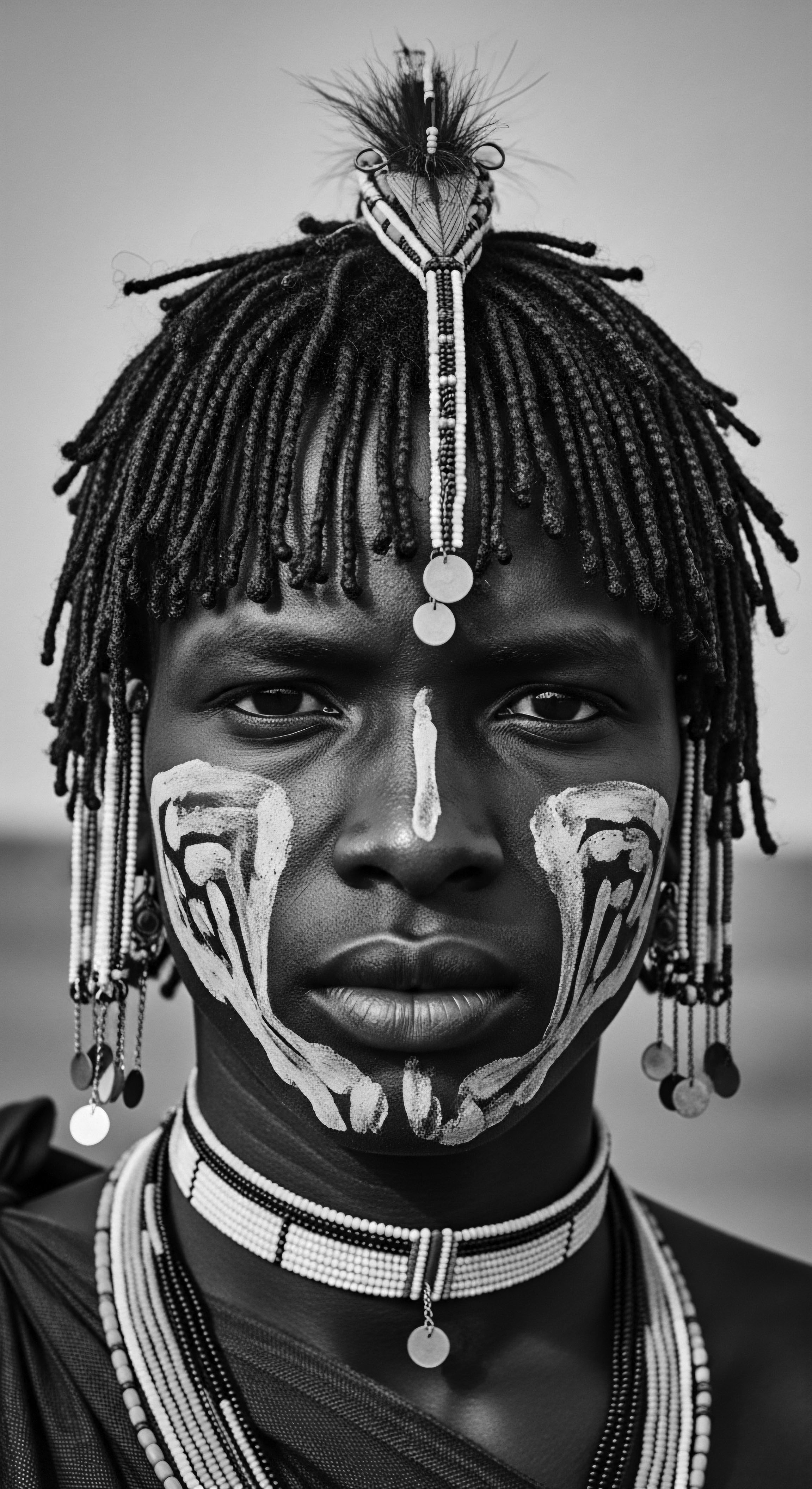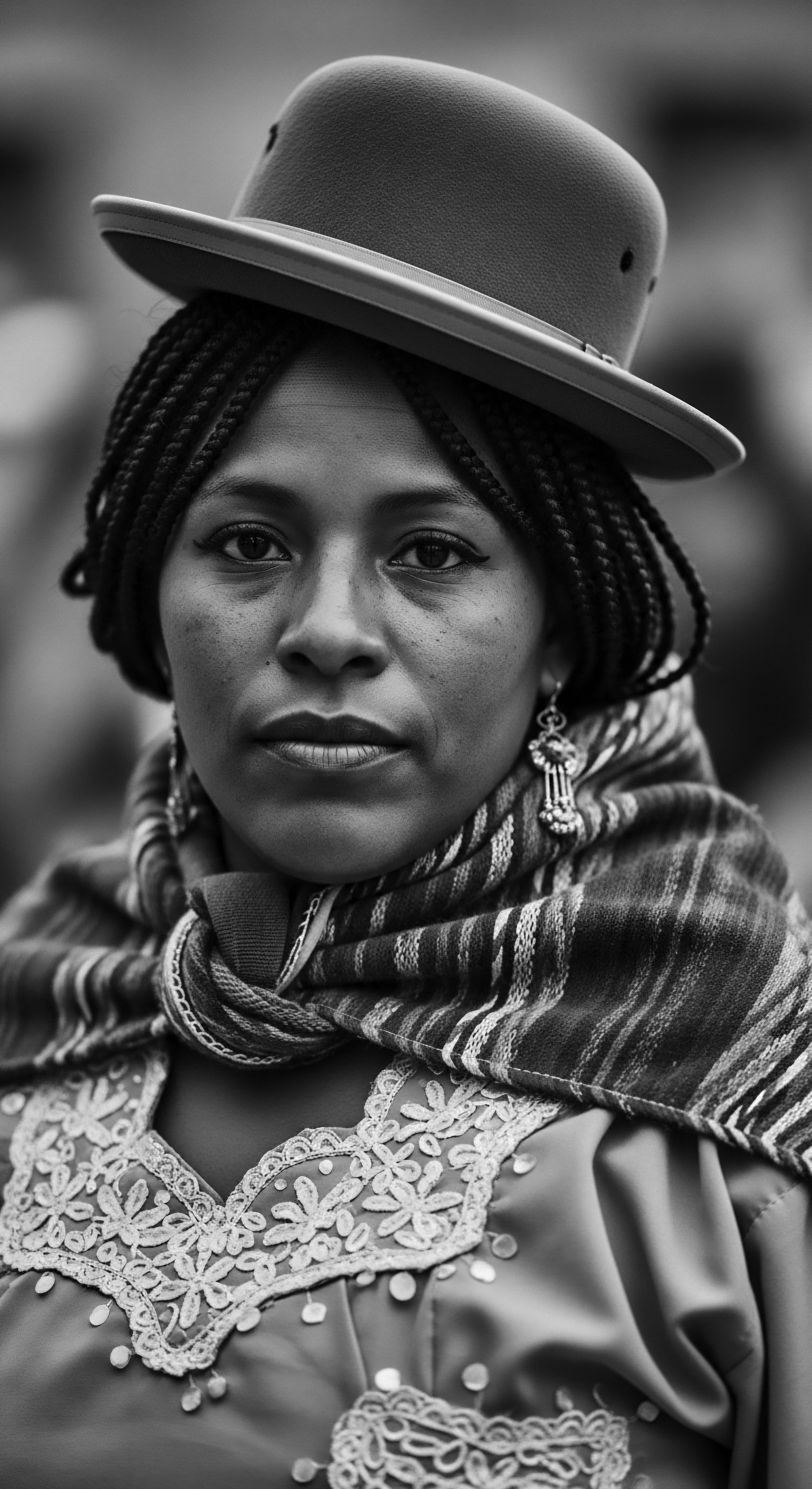
How does textured hair biology reflect human adaptation and ancestral environments?
Textured hair biology reflects human adaptation to ancestral environments, offering protection and serving as a heritage marker.

In what ways did textured hair influence early human survival?
Textured hair protected early humans from solar radiation and aided thermoregulation, profoundly influencing survival within a rich heritage of adaptation.
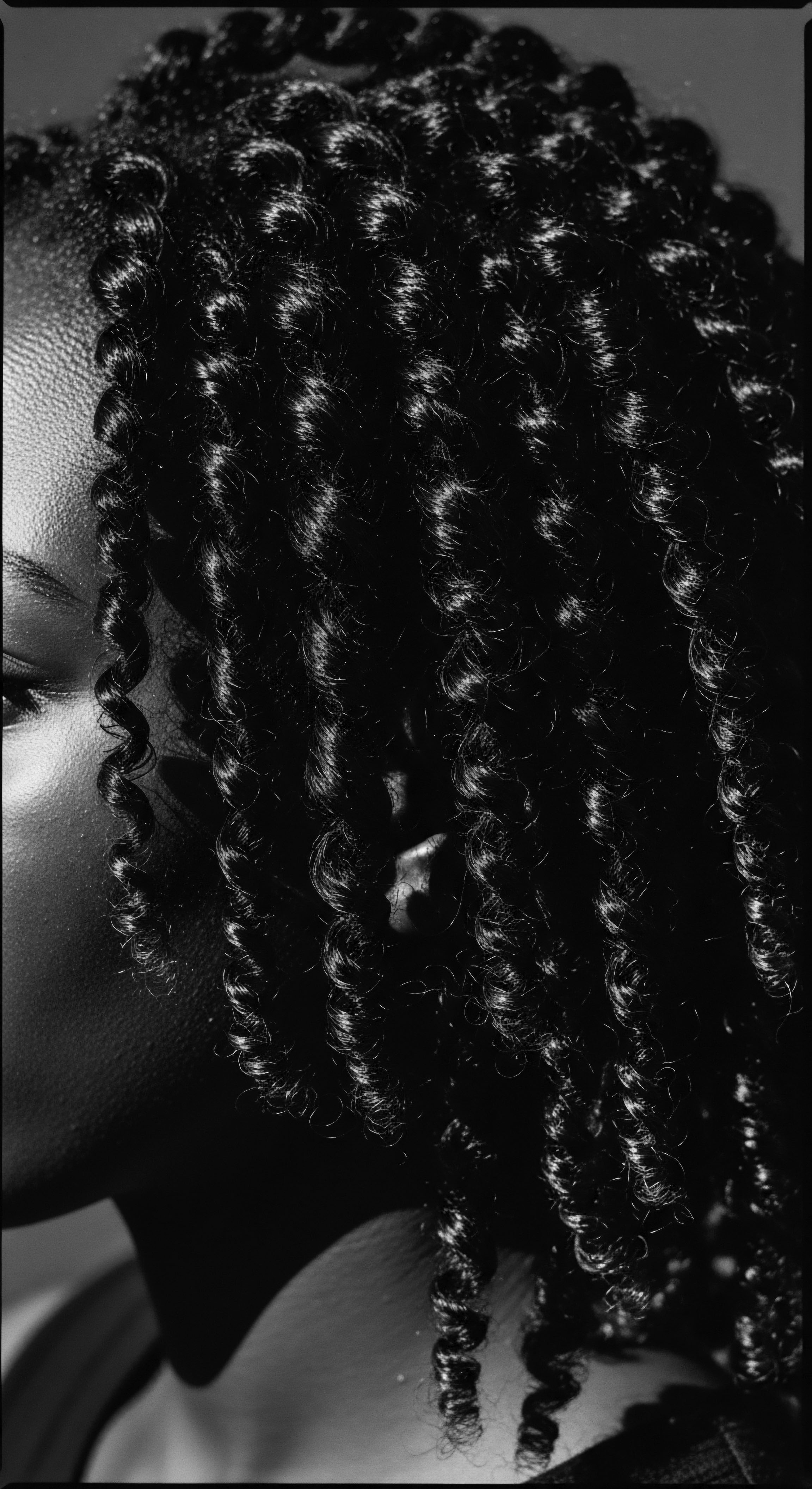
What is the evolutionary significance of textured hair in African heritage?
Textured hair in African heritage served as an evolutionary adaptation for thermoregulation, protecting early human brains from intense solar radiation.

What scientific studies validate textured hair’s evolutionary role in sun protection?
Textured hair’s evolutionary role in sun protection stems from its coiled shape and melanin content, shielding the scalp and preserving water.
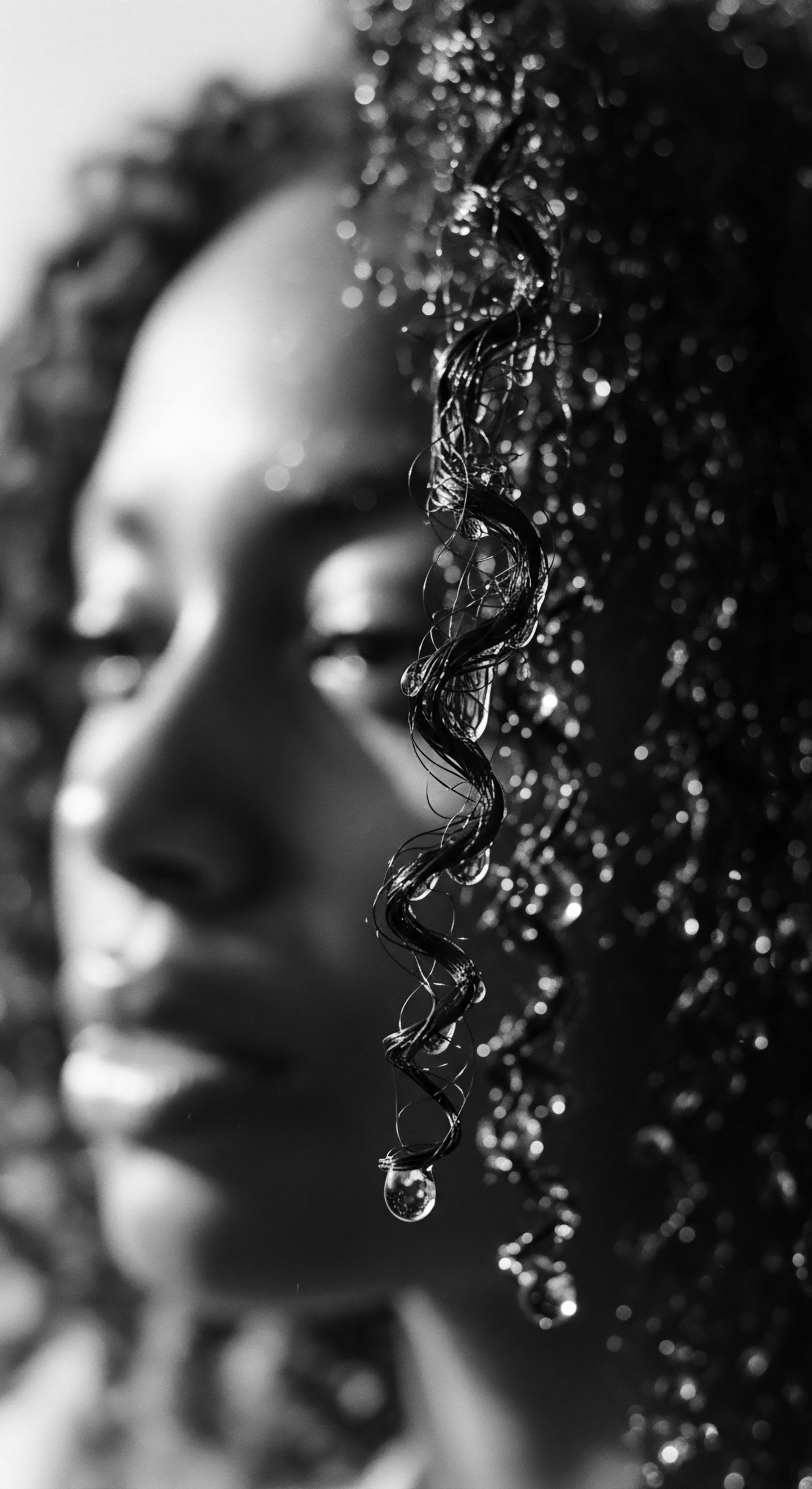
Did textured hair evolve for sun protection?
Yes, textured hair, especially tight curls, evolved as a natural shield to regulate head temperature and protect the brain from solar radiation, a testament to ancestral adaptation.

Can textured hair’s biological structure be a survival trait?
Textured hair’s structure may be a survival trait, offering thermal regulation and UV protection, a testament to ancestral adaptation.

What is the thermoregulatory purpose of textured hair?
Textured hair's unique coil structure creates an air buffer, effectively shielding the scalp from intense sun while retaining warmth in cold, rooted in ancestral survival.
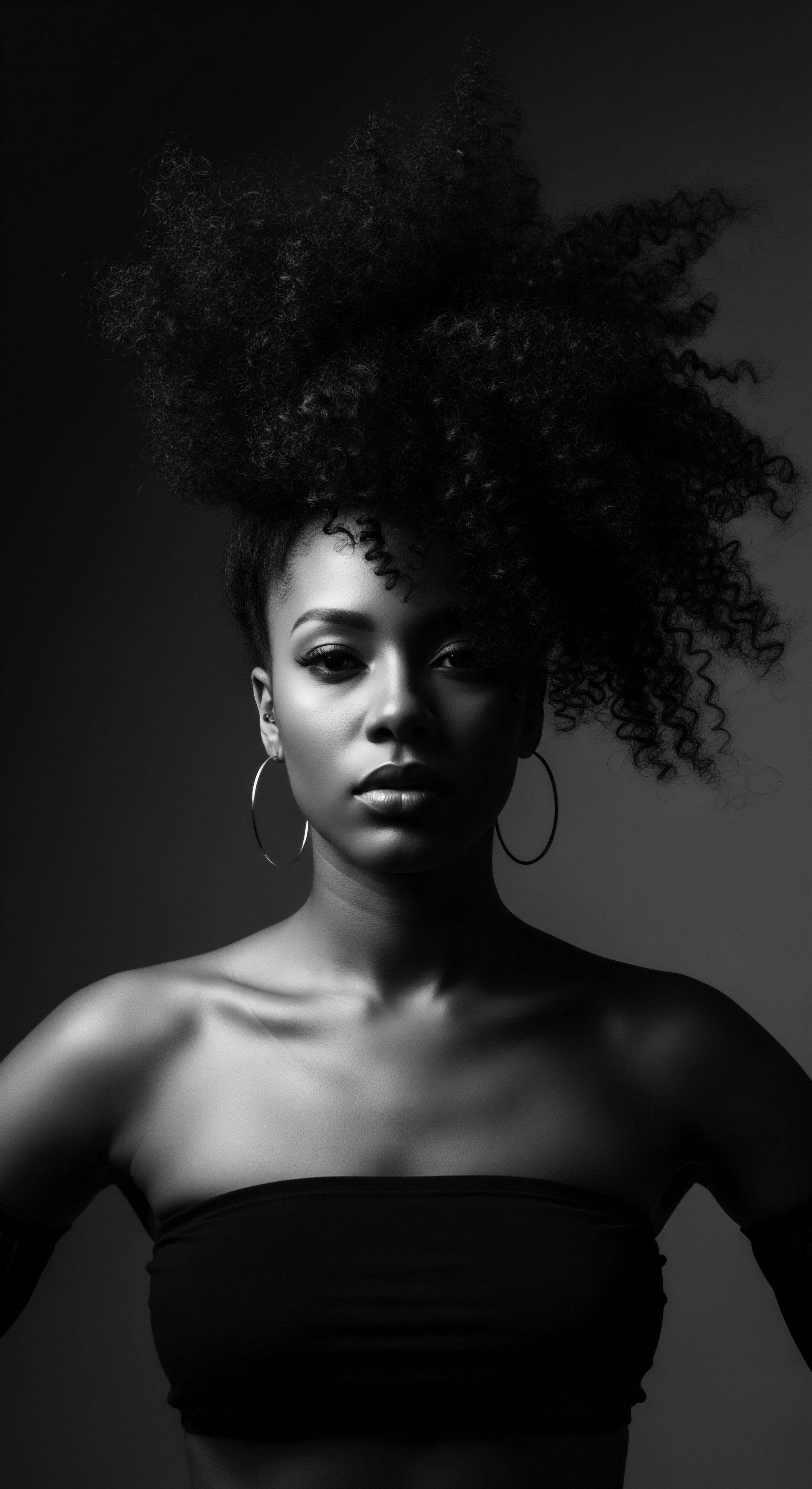
What is the evolutionary benefit of textured hair in arid environments?
Textured hair’s coiled structure and density provide superior thermoregulation and UV protection, a key evolutionary advantage deeply rooted in heritage.

Human Thermal Homeostasis
Meaning ❉ Human thermal homeostasis denotes the body’s intrinsic ability to maintain a stable internal temperature, profoundly influenced by textured hair heritage and ancestral care practices.

Human Evolutionary Adaptations
Meaning ❉ Human Evolutionary Adaptations in textured hair describe inherent traits for thermoregulation and UV protection, rooted in ancestral survival and care.

What historical adaptations shaped textured hair structure?
Textured hair structure adapted for climate protection and thermoregulation, a biological heritage profoundly shaped by ancestral ingenuity.

What is textured hair’s evolutionary advantage?
Textured hair’s evolutionary advantage is its ancestral protective qualities against intense sun, fundamentally linked to cultural identity and resilience.

Why did textured hair evolve as it did?
Textured hair evolved primarily as an adaptation to equatorial climates, offering thermal protection and reflecting rich cultural heritage.

What evolutionary advantages shaped textured hair’s resilience in desert climates?
Textured hair’s coil pattern naturally creates an air barrier, protecting the scalp from intense solar radiation and conserving precious body water.

What is the evolutionary advantage of textured hair?
Textured hair provided an evolutionary advantage by protecting the scalp from solar radiation and aiding thermoregulation, a benefit deeply intertwined with cultural heritage.

Did textured hair’s natural structure offer an evolutionary advantage against sun exposure?
Textured hair, especially tightly coiled varieties, historically offered an evolutionary advantage for sun protection and thermoregulation due to its unique structure.

What is the evolutionary significance of textured hair for human survival?
Textured hair provided early humans with thermoregulation and UV protection, a key evolutionary adaptation for survival rooted in African heritage.
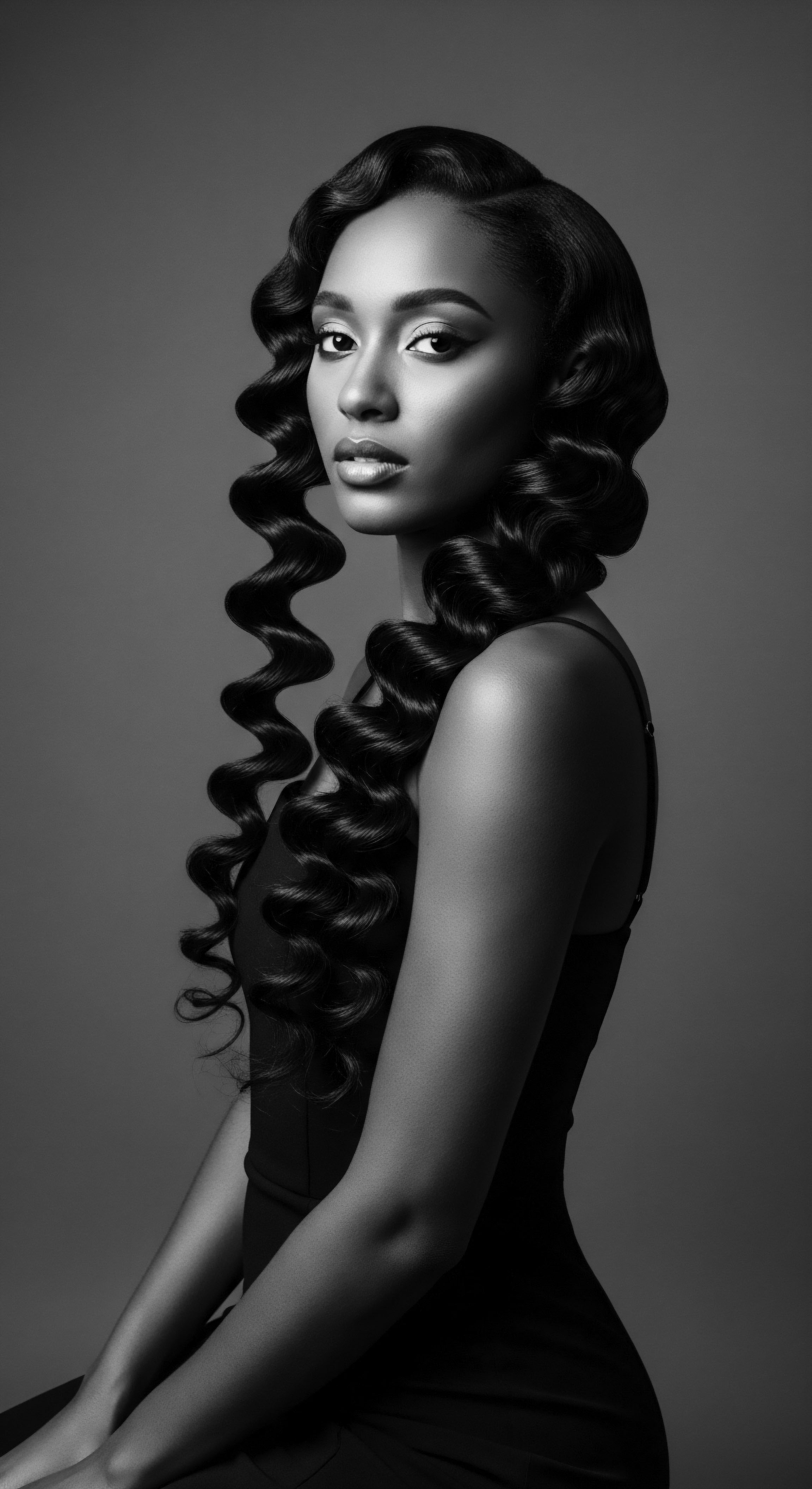
How does textured hair aid in thermoregulation?
Textured hair aids thermoregulation by creating an insulating air layer and absorbing solar radiation, a hereditary adaptation.

What is the biological purpose of textured hair?
Textured hair’s biological purpose is primarily thermoregulation and UV protection, a heritage of adaptation for optimal brain function in ancient climates.
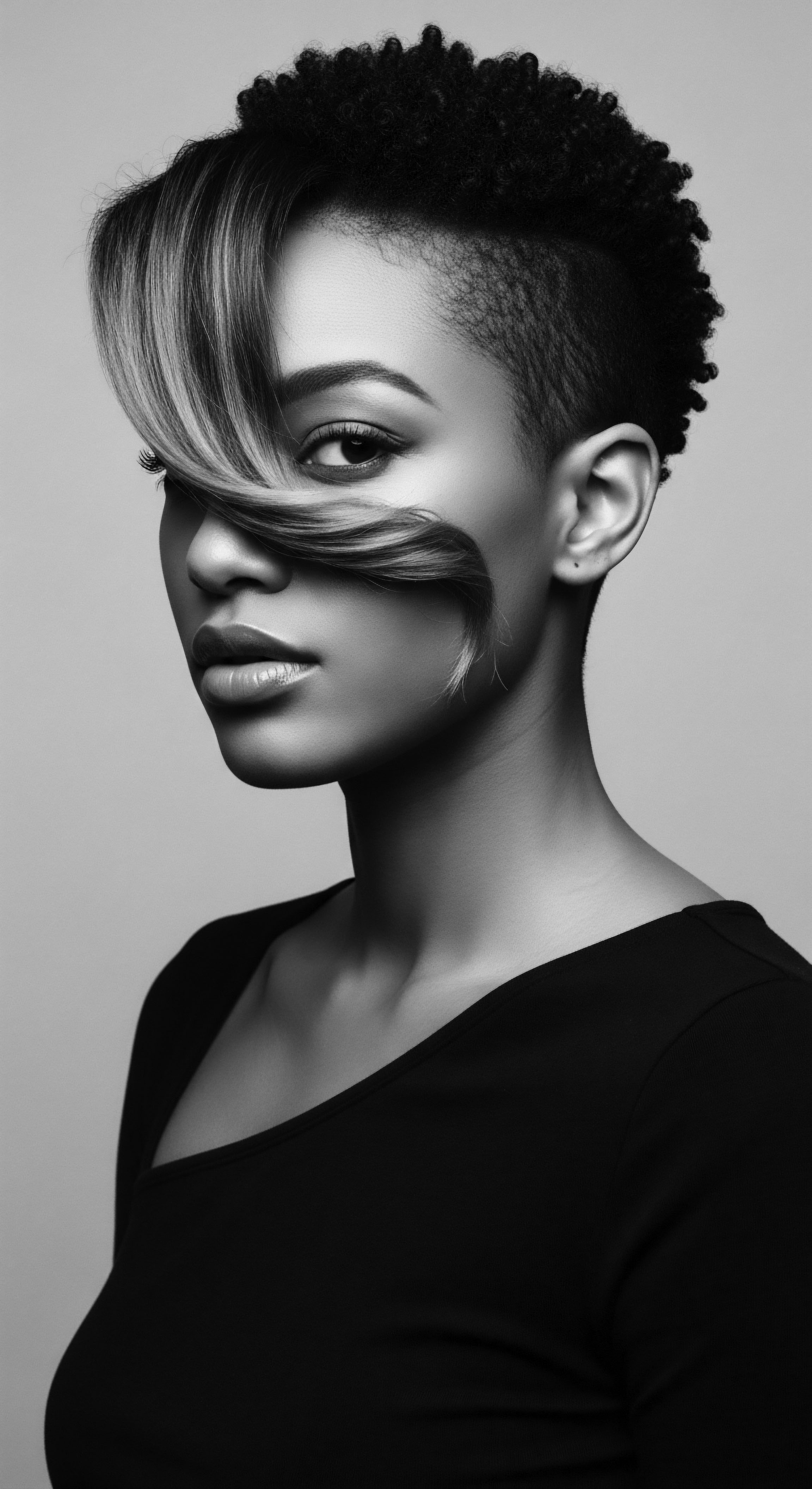
How does textured hair biology connect to ancient African survival?
Textured hair biology, an ancestral design, provided crucial thermoregulation and UV protection vital for ancient African survival, a profound heritage.
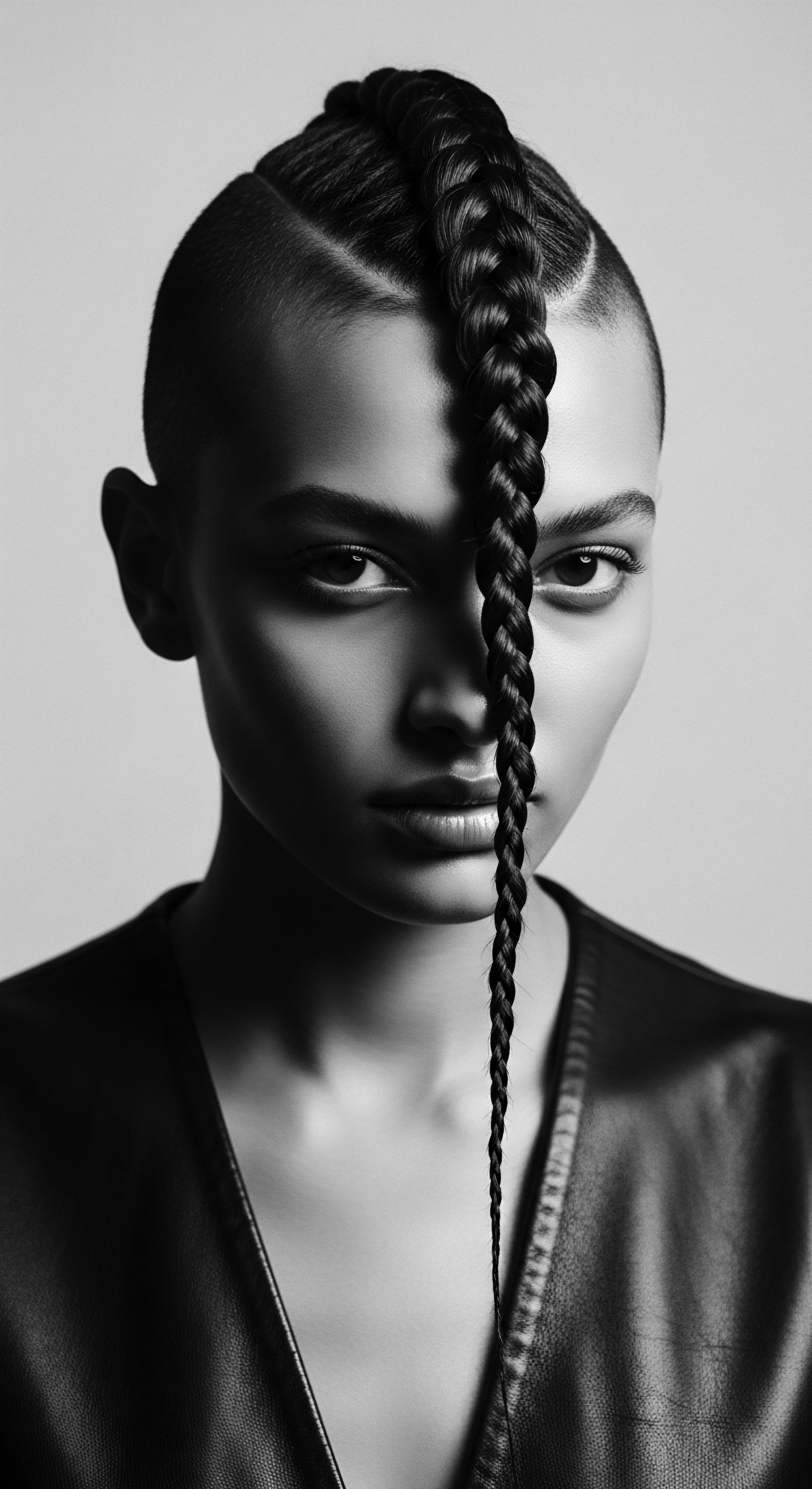
How does textured hair’s biological structure reflect ancestral adaptations?
Textured hair’s biological structure, specifically its coiled shape and follicle morphology, evolved as an ancestral adaptation for enhanced thermoregulation and UV protection of the scalp in hot climates.
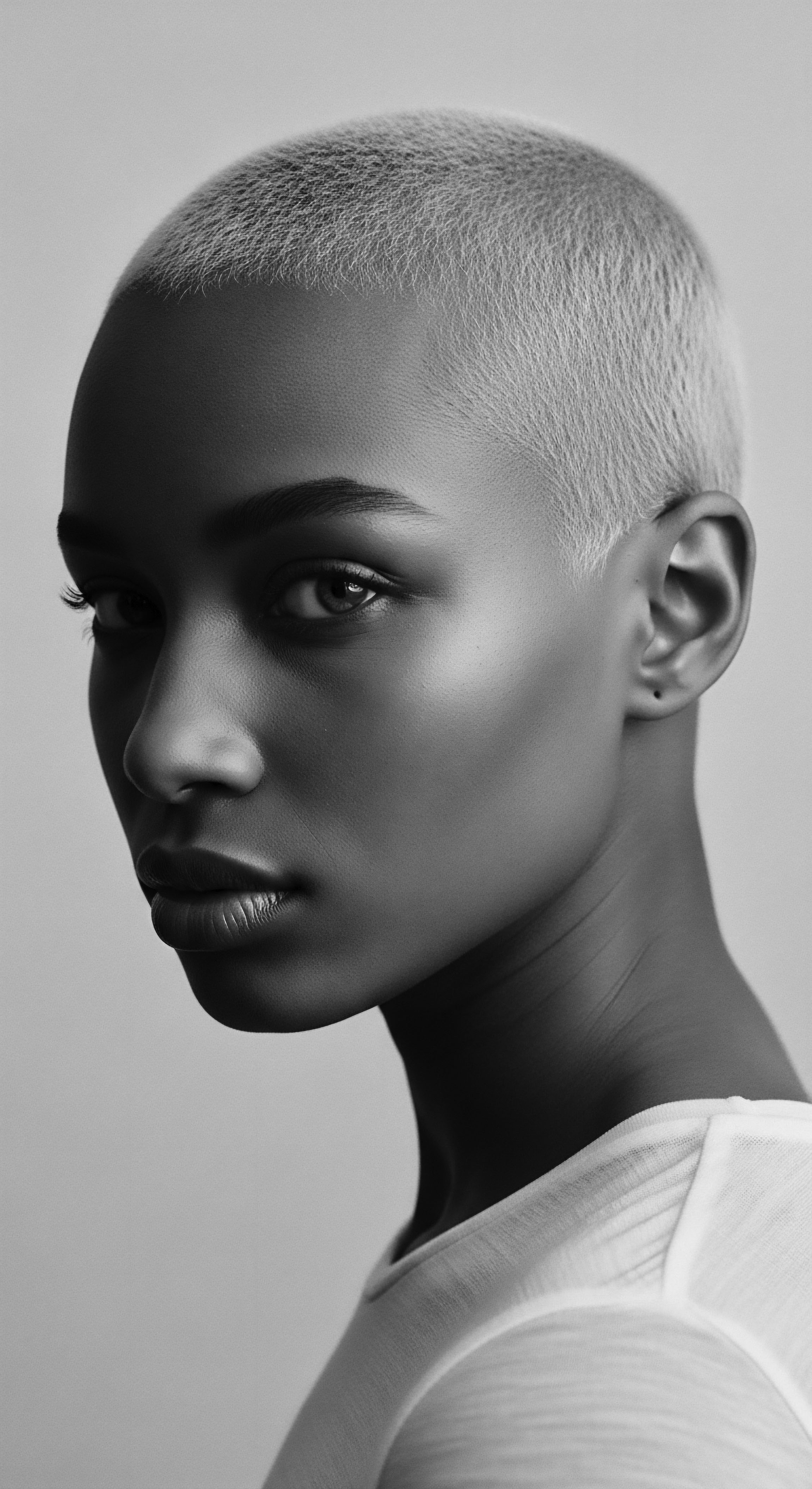
What is textured hair’s ancient biological role?
Textured hair’s ancient biological role protected early human brains from intense solar radiation, serving as a vital thermoregulatory shield.
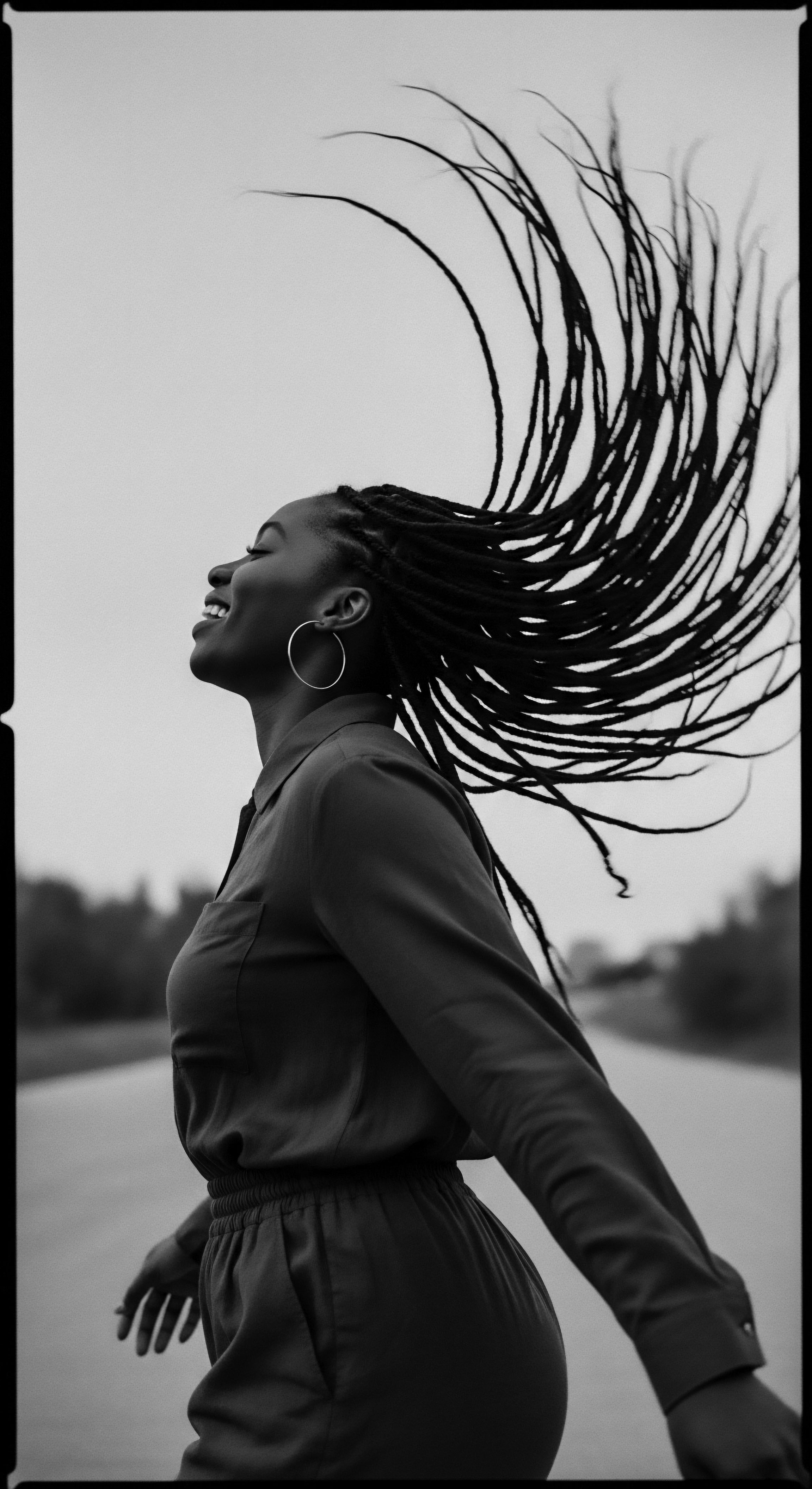
What is the biological adaptation of textured hair?
Textured hair is a biological adaptation for thermoregulation, a heritage shield against solar radiation.

